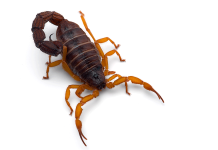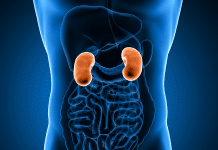Congo virus or Congo fever is a viral disease that is most prevalent in South Africa, the Balkans, in Eurasia, in the Middle East, and the western parts of China. The spread of the Congo virus into other areas may also become possible through birds or movement of migratory wildlife or intra-country livestock movement.
Among all the animal species only the human beings show the signs and symptoms of the disease. The infection has four phases; incubation, prehemorrhagic, hemorrhagic and convalescent phase.
In the incubation phase which lasts for 3-7 days there are no signs shown.
During prehemorrhagic phase which lasts for 4-5 days, the symptoms which appear are high fever, muscle aches, headache, nausea, abdominal pain, and non-bloody diarrhea. This is accompanied by hypotension, increased heart rate, rapid breathing, inflammation of a part of eye, rash and inflammation of the cavity which connects nose and mouth to oesophagus (a tube that transports food to the stomach).
The hemorrhagic phase is short and with progressive hemorrhage. There is occurrence of patches on the skin due to bleeding under the skin. There can be hemorrhage in a part of the eye, bleeding from the nose, bloody vomiting, bloody coughing and black stools due to upper gastrointestinal bleeding.
The survivors experience convalescent period which is initiated 10-20 days after the beginning of the disease. This is a period of after-effects and the signs are mostly a week pulse, increased heart rate. Memory, hearing and hair loss is also there. The thing to note here is that these after effect have only been reported in a very few Congo epidemics.
The virus belongs to the Nairovirus genus. The main reason for the spread of the virus is the ticks of the Hyalomma species but the host ticks of the virus are not limited to the Hyalomma species as the virus is known to be also found in other genera of the ixodid ticks.
The ticks involved in the spread of the Congo virus usually get attached to the livestock through their hook-like organs present on the anterior side of the body. They are also found walking on the ground or climbing up on plants.
The ticks also possess the ability to transmit the virus to their next progeny. So the tick can act not only as a vector as it acts as a host for viral replication, but it can also act as a reservoir of the virus through its many generations.
These ticks affect not only rodents and birds, but they also have an affinity towards larger vertebrates such as humans, cows, and buffalos. The immature phase of their life-cycle is more likely to be spent on smaller hosts, whereas; sizeable vertebrates are preferred as the life-cycle matures.
Mostly the Congo virus infects human beings through tick bites. The virus can also reach human beings through contact with infected animal’s blood or tissue while the slaughtering of the tick-infested animals is being done. Secondary human to human transmissions can also take place.
The current data suggests that 88% of people infected with the virus will develop only non-detectable symptoms, whereas one in eight people have a chance of developing a serious and severe form of the disease.
Out of 10,000 to 15000 infections, an estimated 500 deaths take place worldwide every year due to CCHF. Three billion people are estimated to be continuously at risk of being infected.
It is strictly advised to avoid tick-infested areas and animals. If it is unavoidable to go near such an area or animal then proper clothing and covering of skin should be employed. Furthermore, the use of an anti-tick spray on animals before getting close to them is advised. Chemical tick repellent should be applied to the person’s skin, who is likely to get exposed to ticks. Light-colored clothes should be worn so that ticks can be easily found. It should be made sure that your pant legs are tucked into your socks so that ticks cannot crawl up your pant legs.
Any questions that you have are welcomed in the comment section.



















